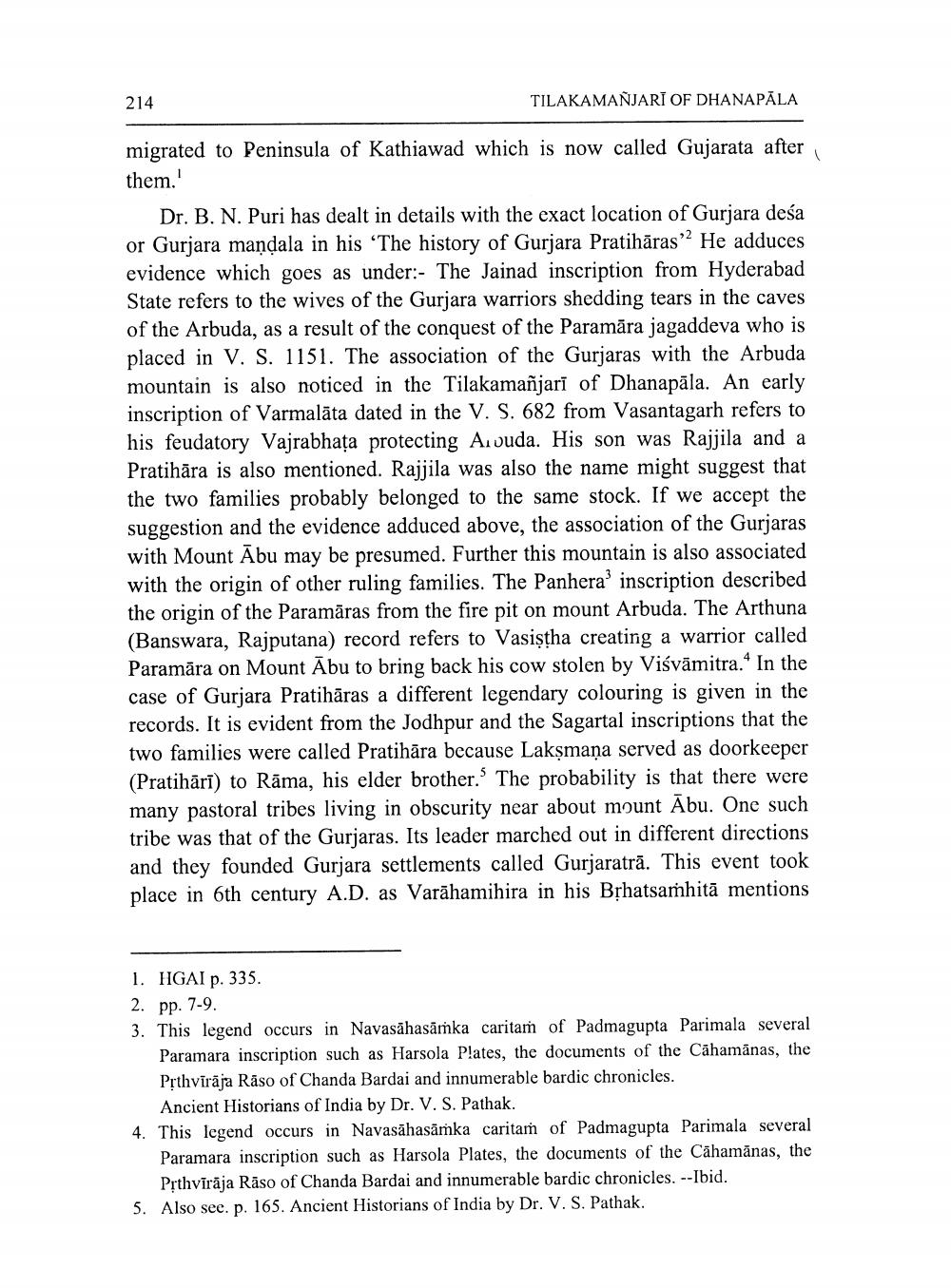________________
214
TILAKAMANJARĪ OF DHANAPĀLA
migrated to Peninsula of Kathiawad which is now called Gujarata after them.
Dr. B. N. Puri has dealt in details with the exact location of Gurjara desa or Gurjara mandala in his “The history of Gurjara Pratihāras”? He adduces evidence which goes as under:- The Jainad inscription from Hyderabad State refers to the wives of the Gurjara warriors shedding tears in the caves of the Arbuda, as a result of the conquest of the Paramāra jagaddeva who is placed in V. S. 1151. The association of the Gurjaras with the Arbuda mountain is also noticed in the Tilakamañjarī of Dhanapāla. An early inscription of Varmalāta dated in the V. S. 682 from Vasantagarh refers to his feudatory Vajrabhata protecting Amuda. His son was Rajjila and a Pratihāra is also mentioned. Rajjila was also the name might suggest that the two families probably belonged to the same stock. If we accept the suggestion and the evidence adduced above, the association of the Gurjaras with Mount Ābu may be presumed. Further this mountain is also associated with the origin of other ruling families. The Panhera' inscription described the origin of the Paramāras from the fire pit on mount Arbuda. The Arthuna (Banswara, Rajputana) record refers to Vasiştha creating a warrior called Paramāra on Mount Abu to bring back his cow stolen by Viśvāmitra. In the case of Gurjara Pratihāras a different legendary colouring is given in the records. It is evident from the Jodhpur and the Sagartal inscriptions that the two families were called Pratihāra because Lakşmaņa served as doorkeeper (Pratihāri) to Rāma, his elder brother. The probability is that there were many pastoral tribes living in obscurity near about mount Ābu. One such tribe was that of the Gurjaras. Its leader marched out in different directions and they founded Gurjara settlements called Gurjaratrā. This event took place in 6th century A.D. as Varāhamihira in his Brhatsaṁhitā mentions
1. HGAI p. 335. 2. pp. 7-9. 3. This legend occurs in Navasāhasāmka caritam of Padmagupta Parimala several
Paramara inscription such as Harsola Plates, the documents of the Cāhamānas, the Prthvīrāja Rāso of Chanda Bardai and innumerable bardic chronicles.
Ancient Historians of India by Dr. V. S. Pathak. 4. This legend occurs in Navasāhasāṁka caritaṁ of Padmagupta Parimala several
Paramara inscription such as Harsola Plates, the documents of the Cāhamānas, the
Prthvīrāja Rāso of Chanda Bardai and innumerable bardic chronicles. --Ibid. 5. Also see. p. 165. Ancient Historians of India by Dr. V. S. Pathak.




